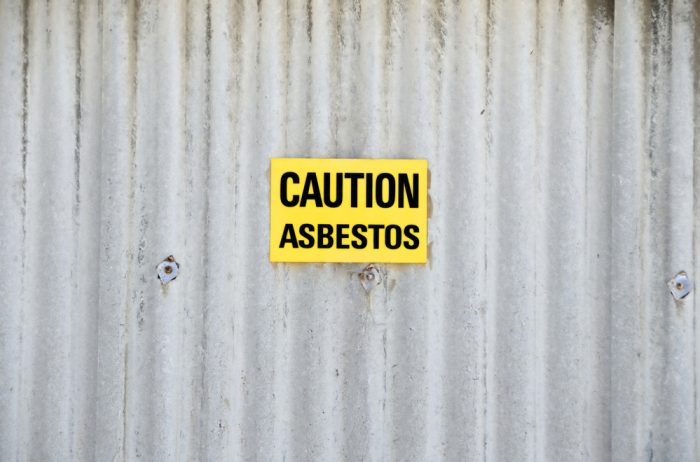Once asbestos has been introduced into your lungs, there is no way to get it out. If you were exposed to asbestos for a short period of time, there’s no reason to panic. If you were only exposed to asbestos for a few days, for example, your risk of developing mesothelioma, asbestosis, or another asbestos-related condition is relatively low.
Short-term asbestos exposure can only do damage in rare, extreme cases. One example of this is the 9/11 first responders who later went on to die of pleural mesothelioma after being exposed to asbestos. Asbestos clean-up operations on this scale are not typical.
The risks of asbestos exposure are well-known, and it’s understandable if you’re concerned if you’ve been around asbestos. Unless you work at a job where you’re exposed to asbestos for long periods of time, however, your risk is low. For example, a home renovation project isn’t going to give you mesothelioma.
Why Asbestos Is Dangerous
When asbestos is damaged, its tiny fibers become airborne, where they can easily travel into your lungs. The negative effects of asbestos exposure are cumulative, so the real danger comes in when someone has been exposed many times. The more fibers you have in your lungs, the more likely you are to develop mesothelioma.
Mesothelioma has a long latency period. If you develop the condition, you may not be diagnosed until 11 to 60 years after asbestos exposure. Many cases take decades to develop, and early diagnosis usually don’t happen because the symptoms in the early stages may be mistaken for many other less-serious conditions.
There is no cure for mesothelioma, and after diagnosis the median survival time is 12 months, though some patients can survive for as many as two years. Surgery can be used to remove some of the tumors, but once the mesothelioma spreads that will no longer be an option. After it spreads, you may be able to try radiation treatments.
How Asbestos Causes Cancer
Asbestos fibers are thin, needle-like, and incredibly tiny, making it easy for them to float through the air. If you inhale them, they will settle in the lining that surrounds your lungs. Eventually, nodules will form where the fibers settled, and they will spread and grow into larger tumors.
Mesothelioma is almost always caused by exposure to asbestos. The form of the disease that occurs in your lungs, which is called pleural mesothelioma, is most common. This disease can also affect the abdomen, heart, and testicles. In addition, asbestos can cause lung cancer, laryngeal cancer, and ovarian cancer.
Some of the other diseases asbestos can cause include:
- Pleuritis
- Asbestosis
- Chronic obstructive pulmonary disease (COPD)
- Diffuse pleural thickening
- Pleural effusion
- Pleural plaque
Every time you are exposed to asbestos, it can accumulate in your body. There is no way to get rid of it, and there’s no cure for mesothelioma.

Preventing Asbestos Exposure
The best way to prevent asbestos exposure is to be aware of the products that contain asbestos so you can avoid them.
At Work or During Home Renovations
The best way to avoid being exposed to asbestos is to understand where you are likely to find it in your home or on your job site. Ceiling tiles, floor tiles, and other materials can be made of asbestos. Always err on the side of caution and assume any material you can’t identify may be asbestos.
Here are some examples of building materials that may contain asbestos:
- Adhesives
- Insulation
- Duct connectors
- Textiles
- Vinyl products
- Fireproofing
- Gaskets
- Plastics
If you believe something may be asbestos, it is critical that you do not disturb it. Hammering, sawing, drilling, or otherwise damaging or moving asbestos could cause its fibers to be released into the air, where you may possibly inhale them.
If you’re concerned that materials in your home or at work may contain asbestos but you aren’t sure, you can contact your local office of Environmental Health and Safety to request that testing be done.
In Baby Powder
There have been thousands of lawsuits alleging that baby powder made with talc has sickened or killed those who use it. Some of these cases have claimed the plaintiffs developed mesothelioma as a result of inhaling talc, which can naturally contain asbestos. Some cosmetics also contain asbestos-contaminated talc.
Baby powder manufacturers deny these claims and blame the lawsuits on aggressive litigation marketing. Despite this, they changed the formula so baby powder no longer contains talc. Instead, it is cornstarch-based. When you’re using powder, be sure you’ve got the cornstarch version and not the talc version.
If You’ve Already Been Exposed
If you’ve already been exposed to asbestos, the best way to prevent mesothelioma after asbestos exposure is to quit smoking. If you believe you’ve been exposed to asbestos, speak to your doctor about quitting. They may be able to prescribe you medications or recommend other treatments or techniques that will help you kick the habit.
According to the Centers for Disease Control and Prevention, on top of lowering your risk of lung cancer, quitting smoking now will also lower your risk of heart disease, lung disease, and other smoking-related illnesses. You can learn more from the CDC about how to quit smoking by following this link.
If You Suspect Asbestos Is in Your Lungs
How do you get tested for mesothelioma? Tell your doctor about any symptoms you are experiencing and mention that you were exposed to asbestos, no matter how long ago it was. Your doctor will order testing and give you an exam to determine the cause of your symptoms and whether or not asbestos was involved.
One of the first things your doctor will do is give you a physical examination. They will be looking for signs like decreased ability to breathe and masses in the abdomen. It may be determined that it is not mesothelioma that is causing your symptoms. Either way, these symptoms can be serious and need to be checked out.
After your physical exam, your doctor may use computerized tomography or X-rays to see what’s going on in your lungs. You may also undergo a biopsy. This procedure involves using a needle to collect fluid or tissue from your chest or abdomen so it can be examined for signs of mesothelioma.
After a Mesothelioma Diagnosis
If the worst should happen and you are diagnosed with mesothelioma, you may want to consider joining a support group. The group will give you the opportunity to meet and share information with other people who have mesothelioma, which can be incredibly helpful for you and your loved ones.
Being a part of a support group can help reduce any anxiety or depression you are suffering as a result of your diagnosis. These groups can also help you learn what you can expect next from other mesothelioma patients who are going through the same thing. More than anything, the group can help you find a renewed sense of hope.
Remember, not everyone who is exposed to asbestos will develop mesothelioma. In fact, most people who are exposed to asbestos—even large amounts—will not develop the disease. However, if you have been exposed at higher levels for an extended period of time, you are more likely to develop mesothelioma.
Find a Home-Based Business to Start-Up >>> Hundreds of Business Listings.

















































